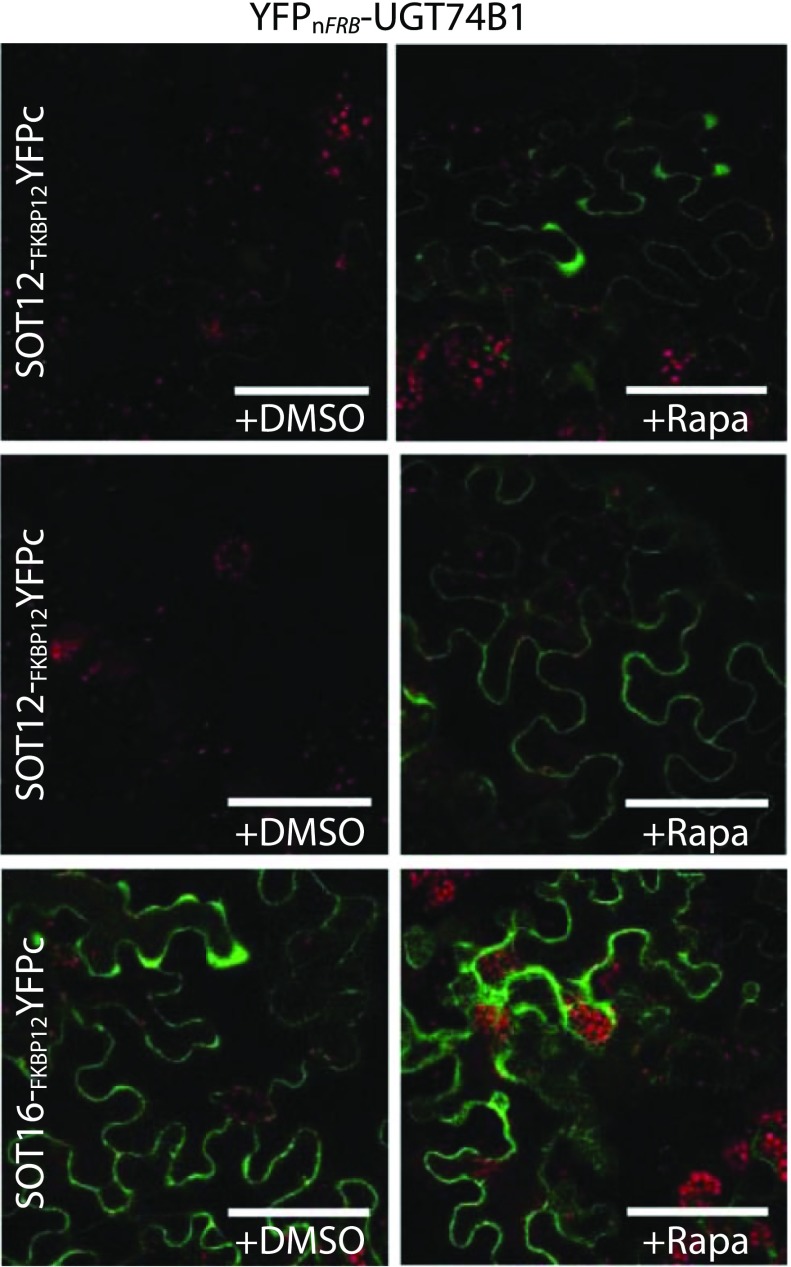Fig. 2.
Application of chemically inducible built-in positive control in BiFC technique. Addition of rapamycin induces the interaction between the two proteins FRB and FKBP12. In the glucosinolate pathway, the interaction between the biosynthetic UGT74B1 and different SOT enzymes was investigated in N. benthamiana leaves by co-expressing either YFPn-FRB or YFPn-FRB-UGT74B1 with YFPc-FKBP12, SOT12-FKBP12-YFPc or SOT16-FKBP12-YFPc. Subsequently, the leaves were infiltrated with either water (+DMSO) or 30 μM rapamycin (+Rapa). The rapamycin-induced protein–protein interaction functions as a built-in positive control, to prove that the lack of interaction between the pair SOT12-UGT74B1 is not due to lack of expression and, to show the maximum fluorescence that can be obtained with the pair SOT16-UGT74B1. Scale bars represent 50 μm. (Courtesy of Scientific Reports, Andersen et al. 2016)

